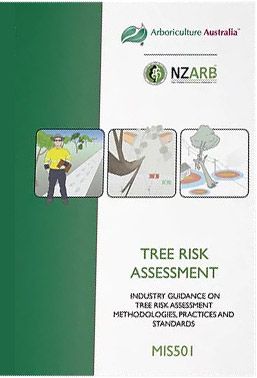
MIS501 Tree Risk Assessment
MIS501 Tree Risk Assessment
Minimum Industry Standard series Members Price is for Members of The New Zealand Arboricultural Association (NZARB). The vision of NZ Arb is to represent the arboriculture community and make it the primary organisation for tree care and to maintain relevancy to the Association’s members, so if you are in the NZ tree care industry please consider joining NZARB by clicking the link above if you are not already a member. |
This book is one in a series of Minimum Industry Standards produced by Arboriculture Australia Ltd and the New Zealand Arboricultural Association in consultation with the national arboriculture community in both countries. These industry peer-reviewed documents provide a ‘body of knowledge’ which is shared by practitioners and can be used as the basis for training, dissemination of skills and professional development.
This book covers the basics of tree climbing equipment and tree access using a variety of tree climbing skills and techniques. Many other techniques, climbing systems and climbing equipment configurations are possible which are not discussed in this document. Nevertheless, the skills and techniques presented in this document form a solid foundation on which practitioners can build.
Contents:
1: Introduction to tree risk assessment
1.2: Tree risk terminology
1.3: Risk thresholds
2: Risk assessment methodologies
3: Components of tree risk assessment 3.1: Target assessment
3.2: Tree failure assessment
| 3.3: Impact assessment
4: Tree risk assessment professional requirements
4.2: Providing advice on risk
4.3: Competency to perform tree risk assessment
|
